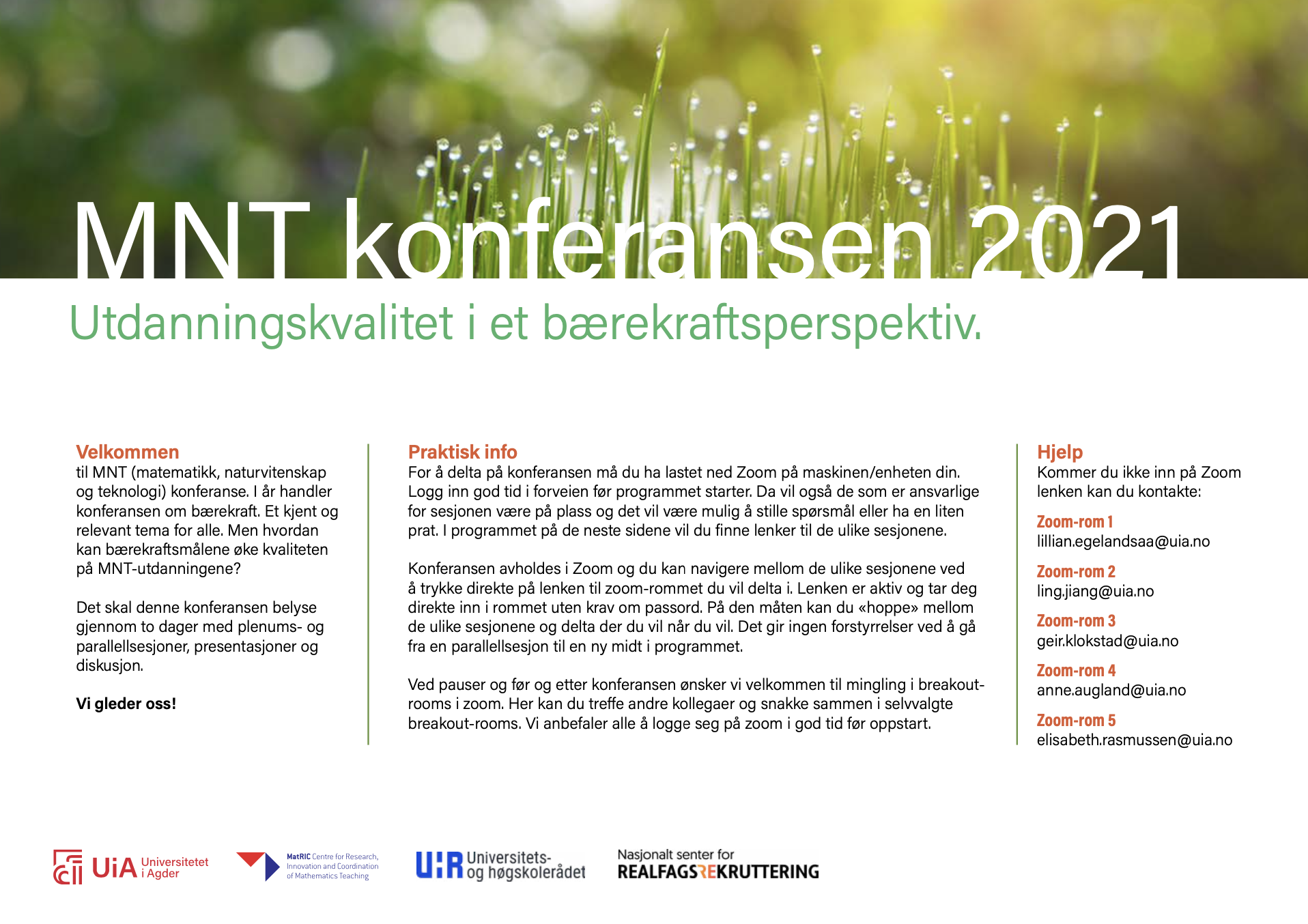Sustainability Awareness through STEAM+
DOI:
https://doi.org/10.5324/njsteme.v5i1.3974Resumé
Innovative technology enterprises have been working closely with OECD countries to address issues related to sustainability. There are many acronyms associated with STEM, e.g. STEM+, incorporating the humanities, community needs, and global concerns indicated by the seventeen Sustainable Development Goals (SDG) of the UN. UN Department of Economic and Social Affairs (UNDESA) supports capacity-building for the SDGs and their related thematic issues, including water, energy, climate, oceans, urbanization, transport, science and technology. We prefer to use STEAM+ based on our earlier work, indicating the inclusion of Arts in the curricula to attract female students and interdisciplinarity. Following Briggs’ constructive alignment paradigm with focus on learning objectives, activities, and assessments (LO-A-A) in a STEAM+ curricula, sustainability can be included with critical reflective thinking addressing air pollution, microplastics in the ocean, renewable energy, food wastage, circular economy, poverty etc. The paradigm “Student in Centre and Front (CSF)” discussed in our earlier study promotes the idea of the student as a responsible member in the society giving due attention to pressing socioeconomic issues such as the SDGs. In this paper, means of extending the responsibility of the students in developing awareness of issues related to SDGs through curricula and projects are presented. The focus of this paper is on addressing STEAM+ tuned for awakening interest in SDGs, with some examples from courses held in our universities. Examples are taken from learning activities involving group of students as part of selected courses and projects/problem-based learning (PPBL) with reflective practice.
Downloads
Downloads
Publiceret
Citation/Eksport
Nummer
Sektion
Licens
Copyright (c) 2021 Saba Mylvaganam, Josef Timmerberg, Hans-Petter Halvorsen, Håkon Viumdal

Dette værk er under følgende licens Creative Commons Navngivelse (by).
The Nordic Journal of STEM Education licenses all content of the journal under a Creative Commons Attribution (CC-BY) licence. This means, among other things, that anyone is free to copy and distribute the content, as long as they give proper credit to the author(s) and the journal. For further information, see Creative Commons website for human readable or lawyer readable versions.
Authors who publish with this journal agree to the following terms:
1. Authors retain copyright and grant the journal right of first publication with the work simultaneously licensed under a Creative Commons Attribution License that allows others to share the work with an acknowledgement of the work's authorship and initial publication in this journal.
2. Authors are able to enter into separate, additional contractual arrangements for the non-exclusive distribution of the journal's published version of the work (e.g., post it to an institutional repository or publish it in a book), with an acknowledgement of its initial publication in this journal.
3. Authors are permitted and encouraged to post their work online (e.g., in institutional repositories or on their website) prior to and during the submission process, as it can lead to productive exchanges, as well as earlier and greater citation of published work (See The Effect of Open Access

